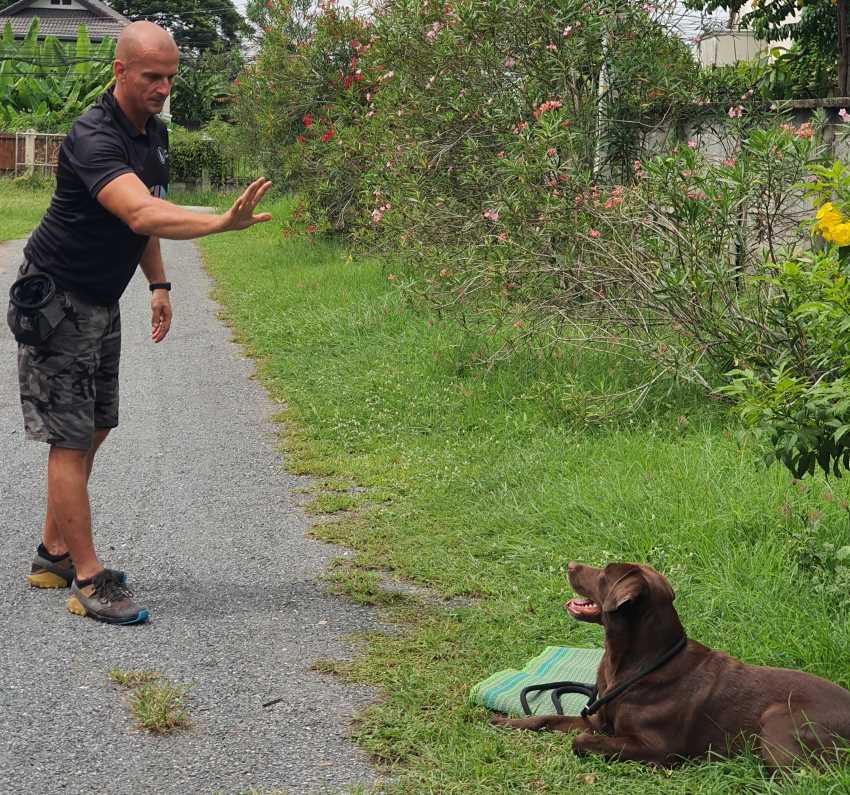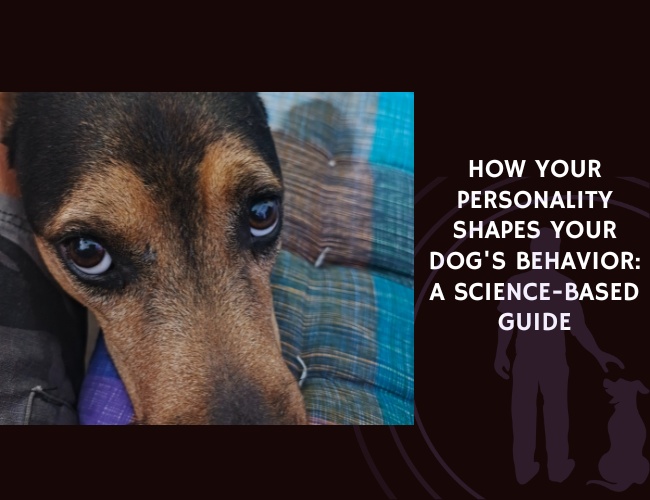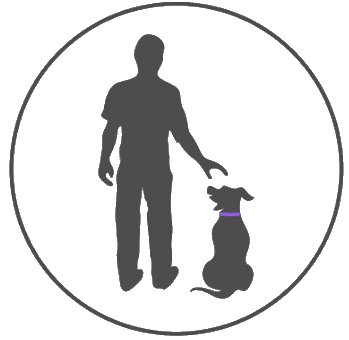Understanding the Human-Dog Connection
Dogs are Highly Perceptive to Human Emotions, Body Language, and Vocal Tones
Dogs have an incredible ability to pick up on human emotions and respond to them in various ways. This sensitivity extends to body language and vocal tones, making dogs highly attuned to their owners’ emotional states. For instance, when you’re feeling happy and upbeat, your dog is likely to mirror that positivity by being more playful and energetic. On the flip side, if you’re anxious or stressed, your dog might become more anxious and reactive, reflecting your emotional state back to you.
This perceptiveness isn’t just a charming quirk; it plays a crucial role in the adaptability and behavior of dogs. According to research, dogs use these cues to navigate their environment and better understand their human companions’ needs, ultimately strengthening the owner-dog bond.
The Relationship Between Owners and Dogs is Bidirectional, Creating a Feedback Loop
The connection between dogs and their owners is not a one-way street. It’s a bidirectional relationship where both parties influence each other. This feedback loop means that while your dog picks up on your emotions and behaviors, you are also affected by your dog’s emotional state and behavior patterns.
For example, if your dog is well-adjusted and confident, it may help you feel more relaxed and positive. Conversely, if your dog is anxious or reactive, it may increase your stress levels, creating a cycle that can be challenging to break. This interplay highlights the importance of being aware of your emotional state and its potential impact on your dog.
Scientific Evidence Shows Physiological Connections Between Owner and Dog Stress Levels
One of the most compelling aspects of the human-dog connection is the physiological link between owner and dog stress levels. Studies have shown that when an owner experiences stress, it can directly affect the dog’s stress levels, and vice versa. For instance, a rise in cortisol levels (the stress hormone) in owners often corresponds with a similar increase in their dogs’ cortisol levels.
This physiological connection underscores the depth of the bond shared between humans and dogs. It also suggests that managing your own stress effectively can have a positive impact on your dog’s well-being. Research supports the idea that a balanced and relaxed owner can contribute to a more stable and relaxed dog.
Wrap-Up
Understanding the intricate connection between you and your dog is the first step toward fostering a harmonious relationship. By recognizing how your emotions, behaviors, and stress levels influence your furry friend, you can better manage this dynamic and create a supportive environment for both of you. This awareness will also be pivotal as we explore how specific owner personality traits can shape dog behavior in the next section.
Key Owner Personality Traits and Their Impact
Calm and Patient Owners
Calmness and patience in dog owners have a significant positive effect on their pets. Dogs thrive on consistency and predictability, which are often provided by calm and patient owners. These owners create an environment of stability for their dogs, leading to well-adjusted and confident pets. Calm owners are less likely to react impulsively, and their steady demeanor helps in reducing anxiety and stress in dogs. This demeanor encourages structured routines and patient training, contributing to a confident and obedient dog. Dogs with calm owners are more likely to exhibit relaxed and balanced behaviors, ready to tackle new situations without fear.
Anxious and Stressed Owners
Unfortunately, anxiety and stress in owners can have detrimental effects on dogs. Dogs are highly perceptive and can sense their owner’s emotional state, often mirroring these feelings themselves. When an owner is anxious or stressed, it can lead to a feedback loop where the dog’s stress levels rise as well. This often results in nervous and reactive pets. For instance, dogs with anxious owners may become more fearful and exhibit signs of separation distress due to the lack of secure and confident leadership. This highlights the importance of managing personal stress to promote a calm and composed atmosphere suitable for the dog’s well-being.
Confident and Assertive Owners
Confident and assertive owners usually produce more obedient and well-behaved dogs. These owners naturally establish strong leadership and clear boundaries, which are crucial for a dog’s understanding of acceptable behavior. Confident owners are consistent with commands and training, unlikely to waver or become uncertain, thereby reinforcing desired behaviors effectively. This structured approach to training helps dogs understand expectations, reducing unwanted behaviors. The sense of security and clear communication provided by confident and assertive owners plays a vital role in a dog’s obedience and overall behavior.
Inconsistent or Passive Owners
Owners who are inconsistent or passive in their approach tend to create confusion and poor boundaries for their dogs. This lack of consistency can lead to increased misbehavior as the dog struggles to understand what is expected of them. Without clear rules and enforced boundaries, dogs may become more prone to disobedience and chaotic behavior. Establishing a structured routine and consistently applying training methods are crucial for mitigating these tendencies.
Highly Active and Social Owners
Owners who lead active and social lifestyles often have dogs that mirror these traits. Energetic and playful dogs benefit greatly from an environment where physical and mental stimulation are plentiful. These dogs thrive in varied environments and social interactions, becoming sociable and energetic pets themselves. In contrast, sedentary owners might influence more laid-back and less active behaviors in their dogs, leading to a more reserved and cautious demeanor.
By understanding how different personality traits affect dog behavior, owners can become more self-aware and adapt their approach for the betterment of their pets. Ensuring a balanced and structured environment and being mindful of their emotional state allows owners to foster positive behavior in their dogs.
How Dogs Mirror Their Owners’ Behavior
Emotional Contagion
Dogs have a remarkable ability to absorb and reflect their owner’s emotional states. This phenomenon, known as emotional contagion, shows how a dog can mirror the feelings of its human companion. If an owner is feeling stressed and anxious, their canine friend might exhibit similar signs of nervousness and restlessness. Research supports that if an owner is generally anxious, their dog is likely to develop stress-related behaviors. Conversely, a calm and relaxed owner can help instill a sense of tranquility and security in their dog.
Energy Matching
Dogs also tend to match the energy levels of their owners. An active owner who frequently engages in physical activities like running, hiking, or playing fetch typically has a dog that is energetic and physically fit. These dogs not only benefit from regular exercise but also enjoy mental stimulation through various activities. On the other hand, more sedentary owners usually influence their dogs to have a laid-back and less active lifestyle. Ensuring your dog’s energy levels match your lifestyle is crucial for their well-being.
Facial Expressions and Vocal Inflections
Dogs are known to be very perceptive to their owner’s facial expressions and vocal tones. When a dog sees their owner smiling or hears a joyful tone, they tend to respond with excitement and happiness. Similarly, when an owner is sad or speaks with a stern voice, dogs can become subdued or anxious. This sensitivity to human emotional cues means that dogs often mirror their owner’s mood and responses to the environment. The way you communicate with your dog, both verbally and through body language, can significantly affect their behavior and emotional state.
Practical Considerations
To foster a positive relationship with your dog, owners should be mindful of their emotions and behaviors. Being aware of how your emotional state impacts your dog can help you take steps to manage stress and maintain a calm demeanor. High-energy play sessions or soothing interactions can align with your dog’s needs based on your personality and lifestyle.
Maintaining a stable environment and structured routines can also help in creating a secure atmosphere for your dog. Dogs thrive on predictability and clear expectations, which contribute to their overall well-being and reduce confusion or misbehavior.
Remember, the relationship between you and your dog is a dynamic one. While dogs mirror their owners’ behavior, they also offer companionship and emotional support, enhancing the life’s quality for both parties involved. This bidirectional influence underscores the importance of emotional awareness and consistency in training and interactions.
As we continue exploring this intricate bond, we delve deeper into the aspects of lifestyle and environment, uncovering how the surroundings and daily habits of owners influence their dog’s behavior and temperament.

The Role of Lifestyle and Environment
Understanding how lifestyle and environment influence your dog’s behavior is essential for maintaining their well-being. Let’s dive into how structured routines, activity levels, and living spaces can shape your dog’s behavior and overall happiness.
Structured Routines Create Stability
Routine is a cornerstone of a dog’s sense of security. Predictable patterns help dogs know what to expect, reducing anxiety and promoting well-adjusted behavior. Dogs thrive on consistency, and by establishing regular feeding, walking, and playtimes, you create a stable environment that fosters calmness.
Implementing structured, repeatable training routines can significantly enhance a dog’s emotional stability. For instance, adhering to a set schedule for walks not only addresses physical needs but also provides mental stimulation, which helps reduce anxiety and misbehavior.
Owner Activity Levels and Dog Exercise
Your activity levels directly impact your dog’s exercise and mental stimulation. Active owners often have energetic, playful dogs, while sedentary owners may find their dogs adopting more relaxed, laid-back behaviors.
Engaging your dog in daily physical activities like walks, fetch, or agility exercises is crucial. Not only do these activities keep your dog fit, but they also prevent boredom, which can lead to destructive behaviors. Active interaction with your dog fosters a stronger bond and helps channel their energy positively.
Impact of Living Space and Environment
The environment where you and your dog live significantly influences their behavior patterns. For example, apartment living might encourage more mellow behavior due to limited space for high-energy activities. Conversely, homes with yards offer opportunities for more independence and physical exercise, fostering active and curious dogs.
Owners living in urban settings should focus on regular park visits or dog-friendly spaces to ensure their pets get enough exercise and socialization. Meanwhile, those in more spacious homes should provide interactive toys and activities to keep their dogs mentally stimulated.
Conclusion
Crafting a well-structured routine, maintaining an appropriate activity level, and providing a conducive living environment are all pivotal in shaping your dog’s behavior. These elements not only contribute to a stable and secure atmosphere but also enhance your dog’s overall quality of life.
Understanding how these factors interplay with your dog’s behavior helps create a harmonious living situation. By focusing on these aspects, you can ensure your dog remains happy and well-adjusted.
Common Behavioral Challenges and Solutions
Understanding the various behavioral challenges your dog might face is crucial in providing a stable and happy environment. These challenges often mirror the owner’s behavior and emotional state. Here, we dive into some common issues, their origins, and practical solutions to help you and your dog coexist harmoniously.
Consistency and Confidence in Training
Training a dog is a significant yet rewarding task, requiring patience, consistency, and confidence. Dogs thrive on routine and clear expectations. Inconsistent actions or commands confuse dogs and can lead to disobedience. Therefore, maintaining a consistent training routine is crucial. Confidence is also key—dogs read body language and voice tones. Owners who project confidence usually have better-behaved dogs because their commands come across as decisive and clear, which dogs respond to positively.
Separation Anxiety
Separation anxiety is a common issue, particularly in dogs that are highly attached to their owners. This condition often results in destructive behavior, excessive barking, and signs of distress when the owner leaves. The root of this issue often stems from the owner’s attachment patterns. Dogs that receive constant attention and are not trained for independence tend to suffer more from separation anxiety.
To combat this, gradually teach your dog that being alone is not a negative experience. Start with short periods of separation, gradually increasing the duration. Providing your dog with engaging toys or puzzles can also help keep its mind occupied, reducing anxiety levels.
Aggression and Reactivity
Aggression and reactivity in dogs can be difficult and dangerous to manage. Interestingly, these behaviors can often be traced back to the owner’s anxiety levels or inconsistent discipline. For example, if an owner is anxious or aggressive, a dog might pick up on these emotions and become reactive or aggressive. Additionally, inconsistent discipline—sometimes allowing certain behaviors and other times not—can confuse a dog, leading to more reactive and defensive behaviors.
To mitigate these behaviors, it’s essential to maintain calm and assertive energy. Structured, repeatable training routines help your dog understand what is expected and feel secure in their environment.
Practical Solutions
Here are some practical tips to address these common behavioral challenges:
- Maintain Consistency: Use the same commands and rules to avoid confusion. Dogs thrive on predictability and clear boundaries.
- Stay Confident: Project confidence in your actions and commands. Dogs mirror their owner’s emotional state and are more likely to follow through when they sense decisiveness.
- Foster Independence: Gradually increase the time your dog spends alone to minimize separation anxiety. Introduce engaging activities to keep them occupied.
- Calm Leadership: If you tend to be anxious, practice calm leadership—speak in a soft voice, use slow movements, and maintain a relaxed presence. This can help to reduce your dog’s anxiety and reactive behaviors.
By remaining aware of your actions and emotional state, you can better guide your dog towards positive behavior patterns, ensuring a healthier and happier relationship.
Practical Tips for Self-Aware Dog Ownership
Maintaining Emotional Awareness and Calm Leadership
Dogs are incredibly perceptive creatures that can sense their owner’s emotional states. Being mindful of this, it’s vital for dog owners to manage their emotions and exhibit calm leadership. This creates a stable and secure environment for the dog. Here are some practical tips:
- Stay calm and patient: Practice deep breathing exercises and mindfulness techniques to maintain a calm demeanor around your dog.
- Use a gentle voice: Speak to your dog in a calm and gentle tone to project reassurance and reduce their stress.
- Maintain consistent body language: Ensure your body language is open and non-threatening. Avoid sudden movements that might startle your dog.
Implementing Consistent Training Routines Regardless of Personality Type
Consistency is key in dog training, regardless of an owner’s personality type. A structured training routine helps in setting clear boundaries and expectations, which makes dogs feel more secure. Here are some steps to follow:
- Set a schedule: Establish a regular training schedule, incorporating short, frequent training sessions.
- Use positive reinforcement: Reward your dog for good behavior with treats, praise, and playtime.
- Be consistent with commands: Use the same commands and signals for specific behaviors to avoid confusing your dog.
- Practice patience: Understand that training takes time and persistence. Be patient with your dog’s learning curve.
Knowing When to Seek Professional Guidance for Personality-Related Issues
Sometimes, despite your best efforts, you might find that your dog’s behavior is still challenging to manage. In such cases, seeking professional help can be beneficial. Here are some signs that it might be time to consult a professional:
- Persistent anxiety or aggression: If your dog shows continuous signs of anxiety or aggression, even after consistent training, a professional trainer or behaviorist can offer specialized techniques and strategies.
- Training setbacks: If you’re struggling to maintain training routines due to your personality traits (e.g., inconsistency or anxiety), a professional can provide personalized advice and support.
- Complex behavioral issues: For more complex behavioral issues like severe separation anxiety or phobias, seeking help from a veterinary behaviorist may be necessary.
By maintaining emotional awareness, implementing consistent training routines, and recognizing when to seek professional guidance, you can create a more harmonious relationship with your furry friend, ensuring their well-being and happiness.
Future Perspectives in Dog-Owner Relationships
Emerging Research on Personality-Based Training Approaches
Recent studies are illuminating the importance of aligning training methods with both the dog’s and the owner’s personality traits. Traditional one-size-fits-all training can lead to varying results, whereas personalized approaches hold promise for more effective behavioral outcomes. Researchers like. are exploring how tailoring training activities to fit the specific personality profiles of both the owner and the dog can create more harmonious interactions and expedited learning.
Personality-based training acknowledges that dogs, much like humans, have individual needs and preferences. By adapting training techniques to consider these differences, the potential for reducing behavioral problems and bolstering positive habits increases significantly. For example, a high-energy dog paired with an active owner will likely benefit from rigorous, engaging training sessions. Conversely, a calm, reserved owner might find success with gentler, reward-based methods that complement their own pace and style.
Long-Term Effects of Owner Personality on Dog Brain Chemistry
Emerging research focuses on how prolonged exposure to an owner’s personality traits can alter a dog’s brain chemistry. Cortisol studies show that dogs’ stress levels often mirror those of their owners, highlighting a biochemical bond that extends beyond simple behavioral mirroring. Longitudinal studies are examining how living in different emotional environments can lead to enduring neurological changes in dogs. For instance, dogs raised by anxious or stressed owners tend to have higher baseline cortisol levels, which can affect their overall health and behavior long-term.
These studies are revealing that the implications of owner personality on dog well-being are both deep and lasting. Understanding these effects enables owners to take proactive measures to create a more balanced and serene environment for their pets. Techniques such as mindful relaxation practices and behavior modification can help mitigate stress for both parties involved.
Potential for Improved Matching Between Owner Personalities and Dog Breeds

With growing awareness of the intricate relationship between owner personality and dog behavior, the potential for better matching of dogs to owners is being explored. Breeding practices and adoption processes can benefit from this knowledge, aiming to place dogs in homes where their temperaments and needs are best suited to thrive.
For instance, an outgoing and highly sociable individual might be better matched with an energetic and extroverted breed like a Labrador Retriever, while a more reserved person might find greater satisfaction with a quieter, more independent breed such as a Shiba Inu. The goal is to foster relationships where both the dog and the owner can enjoy a fulfilling, low-stress life together.
By considering personality dynamics at the outset, the likelihood of successful adoptions and long-term companionship increases, as does the reduction of returned or rehomed pets. Future advancements in genetic research and behavioral studies could further refine these matching processes, resulting in happier pairs and fewer behavioral issues down the line.
Taking a holistic approach to the human-dog relationship not only bodes well for canine welfare but also enriches the lives of owners, ensuring that both members of the pair can share a joyful and harmonious bond.



